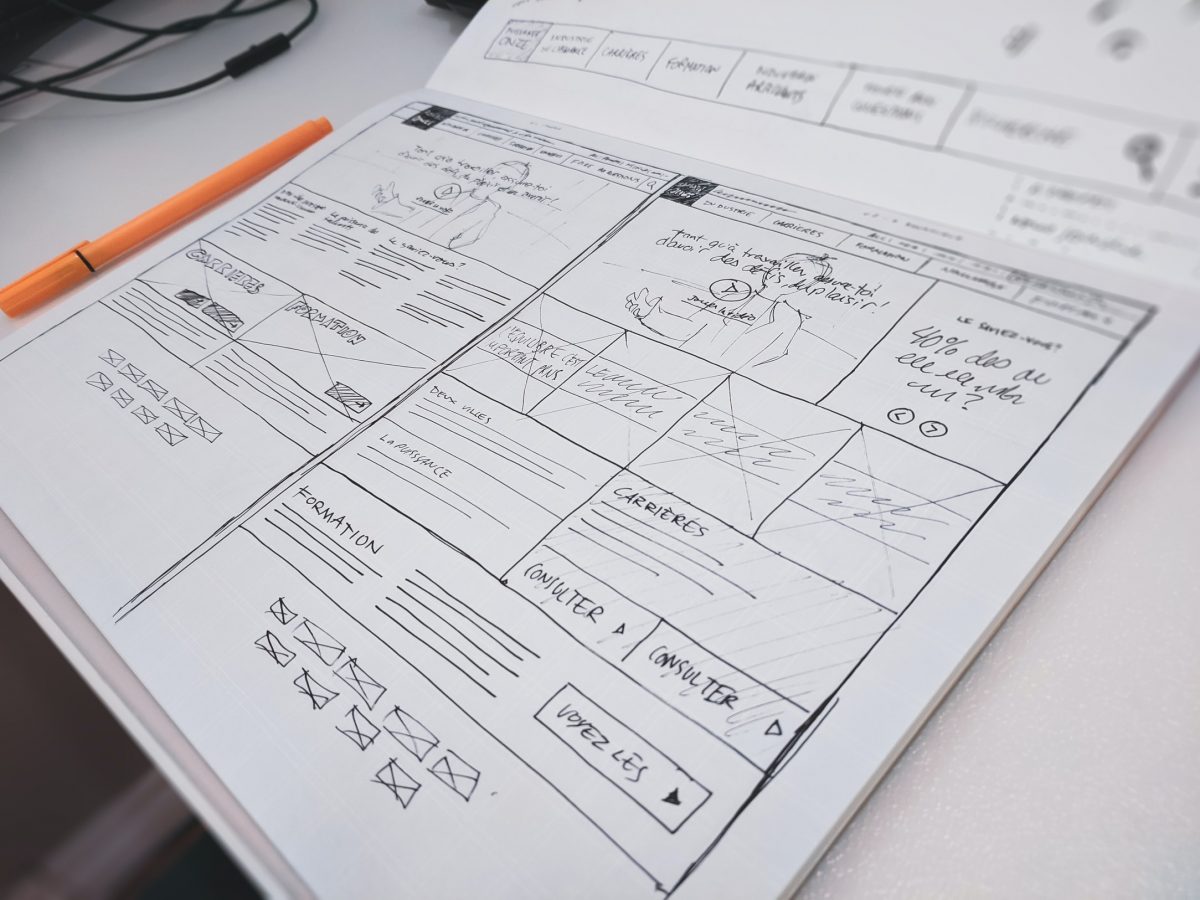Developing an attention-grabbing and exquisitely crafted website design can be challenging.
Why is this?
As a nonprofit, you’re constantly working on the best way to amplify your mission and impact. A website can be an incredibly effective way to do this, but budget and technical know-how often limit nonprofits from having a modern website with a compelling user experience.
In this article, we break down the daunting subject of nonprofit web design into a few key ideas and tips that will help you ensure that your website is optimized to convert users into supporters and effectively tell your story.
1- Invest in a good content management system for your non-profit
Content is the meat and bones of your website. It tells your story, it illustrates your impact, and it compels users to support you. That’s why it’s important that your website allows you easy access to your content so that you can update and add to it when needed. Unless you have a web developer on staff, a content management system, or CMS, is vital to maintaining your website.
A good CMS allows users with very little technical background to log into the backend of their website and manage the site content in an easy, comprehensive way. Web platforms like WordPress come with built-in content management systems that are accessible and straight-forward. Make sure to do a little research on CMS before you choose or switch to a new web hosting platform.
2- Invest in engaging graphics
Visuals and pictures to accompany the storytelling of your website are essential.
The photos that will have the greatest influence on your website are those that are unique to you/your organization (e.g. those taken or created by someone directly involved in your organization).
There are just a handful of suggestions here:
- Pictures that portray your direct impact and the beneficiaries of that impact.
- Images of your staff, volunteers, and supporters doing work or attending events.
- Infographics that break down your key impact stats.
Pictures can far more effectively express messages and feelings than written words. Human beings are visual, so data that is conveyed in a visual way is more tangible and palpable.
It is important that the pictures and videos that you use for your web content are high quality. Remember, most people have a high-quality camera built into their cellphone these days. Don’t feel limited just because you don’t have a professional photographer on staff.
Look how the nonprofit One Drop uses vivid and colorful imagery, maps, logos, and infographics to effectively break up their content with engaging visuals. This creates a pleasant user-experience that isn’t too text-heavy.
Visual content will result in more time being spent on your website by visitors. This is a brilliant search engine optimization website design tactic! The amount of time a user spends on your site can be a favorable (or negative) signal for Google, thereby impacting the search results ranking.
3 – Optimize your website for mobile view
Now that tablets and phones are so widespread, many web designers use a responsive design system that will automatically make the site optimized for mobile devices.
Again, if you’re not able to hire a professional web designer, using a web hosting platform like WordPress can turn this into an automatic process. Most modern website themes now come with responsive design options built-in.
4 – Prioritize local SEO strategies and other SEO techniques your website
Before your organization even considers anything at all, the first thing is to make sure that you have Google Analytics installed on your nonprofit website. This is the easiest and fastest way to get effective and useful data about your website traffic. Even better? It’s free.
When it comes to SEO for nonprofits and charities, search engine rankings, especially in a specific geographic area, can be important.
Some of the ways to optimize local SEO include:
- Create a professional profile on Google My Business.
- Put the location of your organization’s branch on Google Maps.
- Add your nonprofit organization to local directories, which are other sites and portals that list services.
Other SEO strategies you can use are:
- Use relevant keywords frequently within your site’s content.
- Post quality content regularly (a blog is a good way to do this).
- Use backlinks to encourage reach (we discuss this further down).
5 – Make the navigation easy and intuitive
Navigation on your nonprofit website should be easy and seamless in such a way that one can easily access every page on your website.
- Include a top-of-screen or left-side navigation bar that’s clearly visible on all pages of your website (this can be exempted from the donation form).
- Keep all your navigation titles very short (i.e between 1 – 3 words).
- Avoid vocabulary that does not clearly or correctly portray the content on the page to which it is linked.
- In a case where you need a drop-down menu for your web pages, keep it simple and use only one level of drop-down menu.
Your navigation is what directs users around the website. They shouldn’t have a tough time finding important information, especially your donation page.
6 – Use an obvious and clearly visible Donate button
Chances are, the Donate button is the most important call-to-action on your website. We suggest make sure that “Donate” has its own place in your navigation, even if your donation form is nestled within another page. Some web design templates also allow you to include a dedicated “Donate” button on your site, with a unique color and design that differentiates it from the other items in your navigation.
7 – Use link building to generate brand reach
We talked above about SEO and how it is critical to rank well in Google search. One strategy to optimize SEO is called link building. Link building is the idea that if you create valuable content, other websites will share links to thatcontent. The more people that share links to your website, the better your ranking will be.
Effective link building depends on creating new content that other sites will be interested in sharing via a link on their site. There are a few strategies to creating valuable, sharable content. A blog, for example, allows your nonprofit to create posts that tell your story, showcase your expertise, and decimate interesting information. Blog posts are easily sharable and can be packed with useful information on a single topic.
If your Annual Reports are something you’re particularly proud of, digitizing and sharing your reports on your website is another way to give users a bunch of relevant information all on one page, increasing the chances that they’ll share a link to this content.
8- Tell your story
One of the best ways to get your message across to people is through a practical example. By telling real stories, presenting the results achieved, and sharing your progress, we enable people to connect with our missions and see the real impact of their dollars. Every day you make this world a little better – let others know about it.




 8 Virtual Fundraising Ideas for Your Nonprofit
8 Virtual Fundraising Ideas for Your Nonprofit